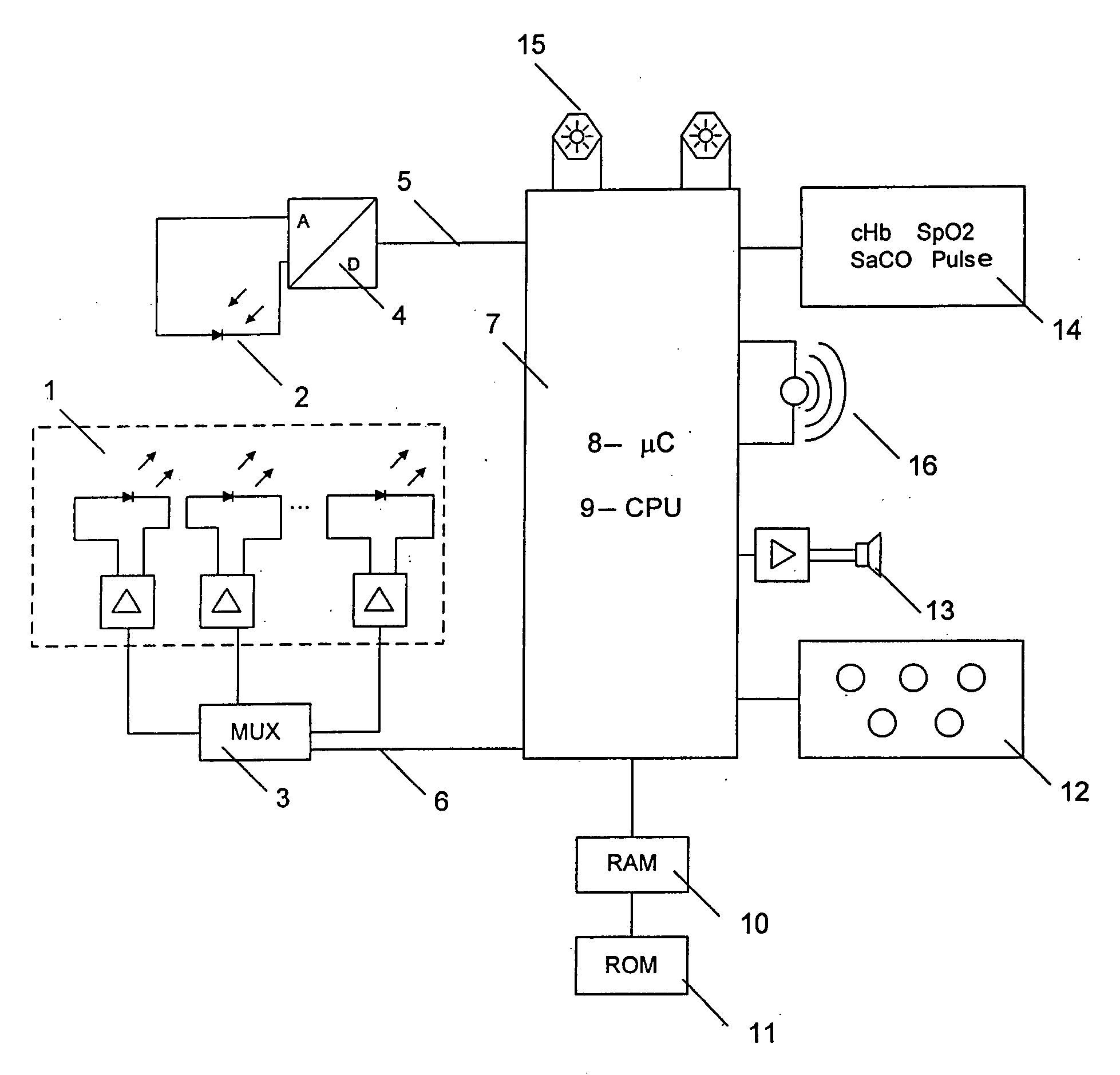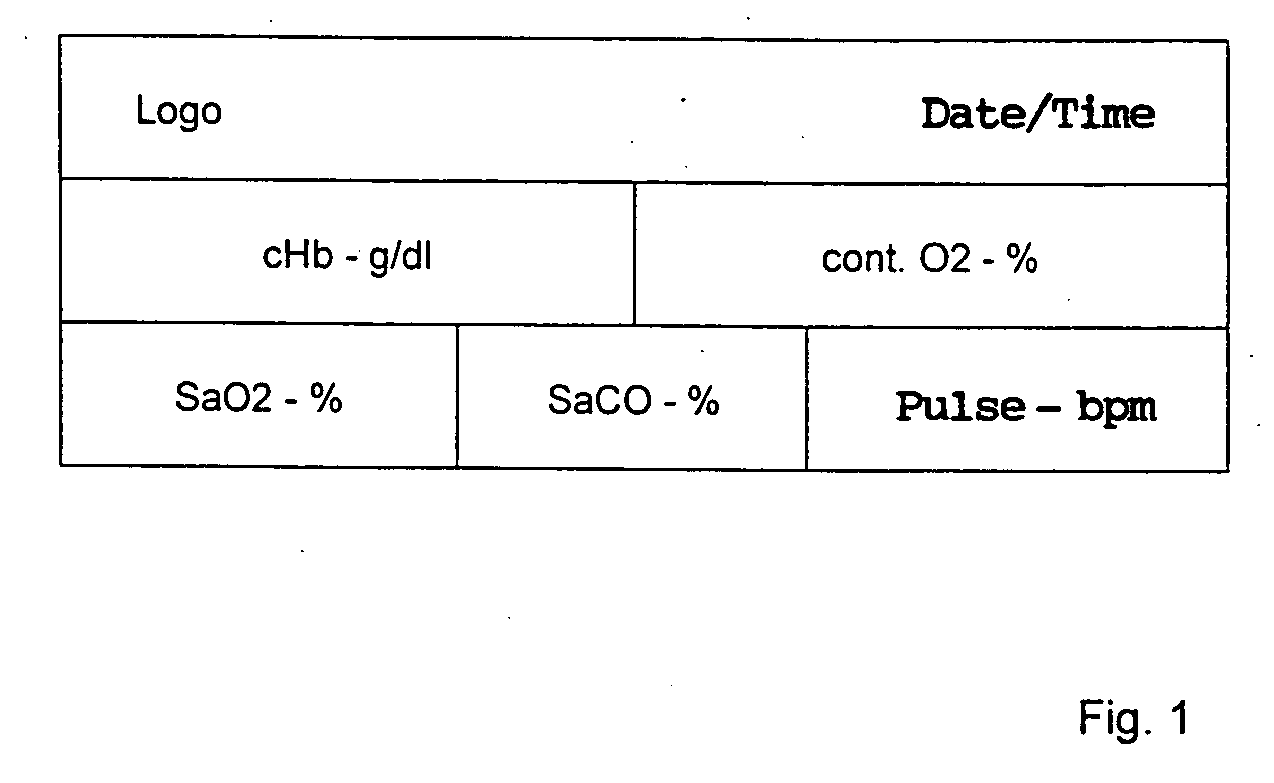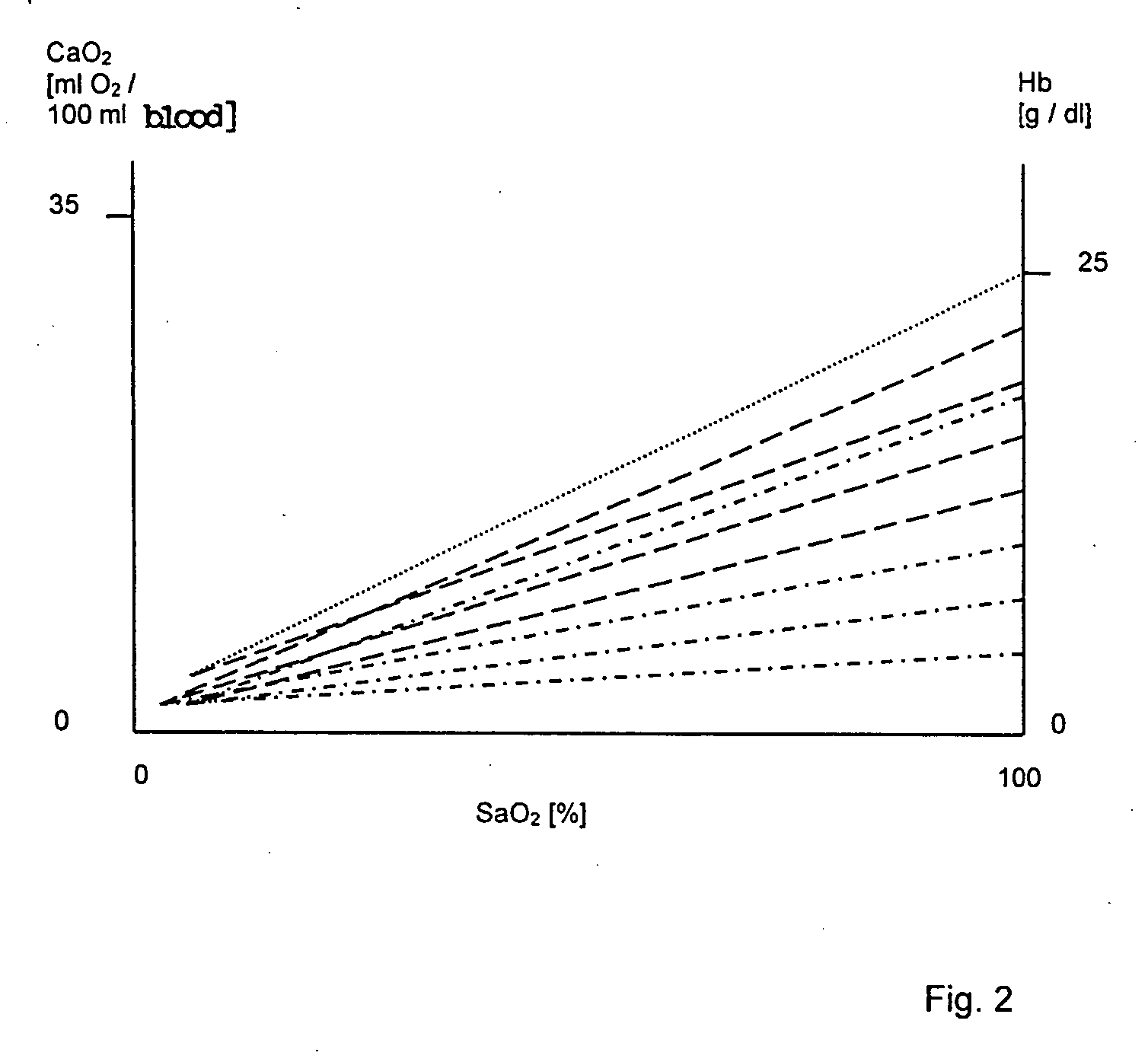Display means for vital parameters
a technology of vital parameters and display means, applied in the field of display, can solve the problems of display means and not being suitable for continuous monitoring
- Summary
- Abstract
- Description
- Claims
- Application Information
AI Technical Summary
Benefits of technology
Problems solved by technology
Method used
Image
Examples
Embodiment Construction
[0049]FIG. 2 shows the dependence of CaO2, SaO2, and cHb. The boundary regions for CaO2 are at the points where the organism starts to change over to anaerobic metabolism in the periphery and where the hypoxia reaches the critical range. When CaO2 is cut in half in the acute situation, the patient will in all likelihood still be in the safe range, provided that all other organs are healthy. In a hypoxemia-adapted patient who is otherwise healthy, the critical value is one-third of the normal value.
[0050] According to the invention, the user can choose to have the measurement values displayed singly, each one by itself. Alternatively and / or additionally, at least two measurement values can be displayed simultaneously and / or in alternation. The user can also select the unit of measurement to be assigned to each measurement value and thus to have either the relative value displayed in % or the absolute value in units. According to another possibility, a total amount in, for example, m...
PUM
 Login to View More
Login to View More Abstract
Description
Claims
Application Information
 Login to View More
Login to View More - R&D
- Intellectual Property
- Life Sciences
- Materials
- Tech Scout
- Unparalleled Data Quality
- Higher Quality Content
- 60% Fewer Hallucinations
Browse by: Latest US Patents, China's latest patents, Technical Efficacy Thesaurus, Application Domain, Technology Topic, Popular Technical Reports.
© 2025 PatSnap. All rights reserved.Legal|Privacy policy|Modern Slavery Act Transparency Statement|Sitemap|About US| Contact US: help@patsnap.com



